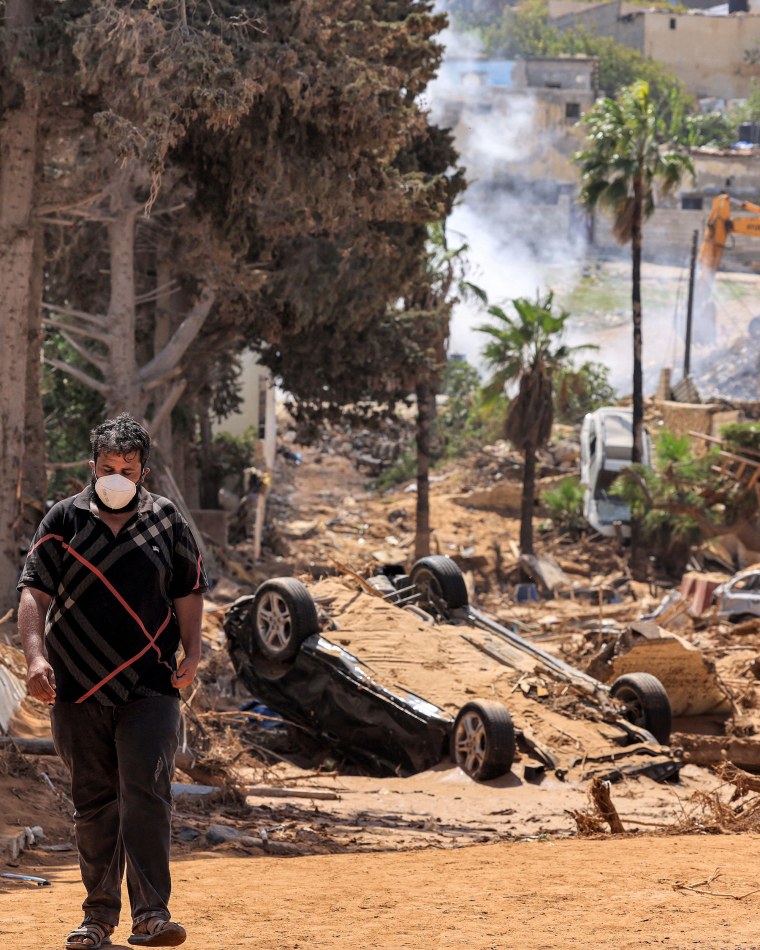Thousands of people were killed last week when devastating floods caused by Storm Daniel’s heavy rainfall hit Libya, a failed state that is still recovering from years of civil war.
Record rainfall was recorded in the hours leading up to the floods on Sept. 10, with winds reaching 80 mph in some parts of the country. For many, this was just another downpour, but for the 90,000 residents of the Mediterranean port city of Derna, it became a catastrophe they had to fend off by themselves. Two poorly maintained dams in the outskirts of the city failed, sending millions of cubic meters of floodwater all through downtown and washing entire neighborhoods into the sea.
While the disaster has been widely blamed on climate change-induced violent weather, survivors and experts point at the complicity of local authorities in what they say was a fatal failure of public infrastructure during decades of corruption and neglect.
Here’s how unusually heavy rainfall destroyed the city.
In the days leading up to the disaster, authorities began shutting down some roads. The storm kicked off in the country’s northwest on Sept. 9, getting stronger by the hour and slowly moving eastward. Libya’s national meteorological agency issued warnings days in advance, and Derna’s now-ousted mayor called for evacuations.
The storm brought torrential rains that broke records, surpassing 16 inches in some areas, and water began to accumulate behind two dams near Derna.
The 243-foot Abu Mansour dam, some 8.6 miles from the city, was capable of holding up to 22.5 million cubic meters of water. This was more than 10 times the capacity of the lower dam, which was much closer to the Derna.
The two dams had suffered major damage in the 1980s, Libya’s general prosecutor al-Sediq al-Sour said last week during a news conference, adding that a government study a decade later revealed cracks and fissures in their structures. Subsequent restoration efforts failed to launch despite a growing number of reports about the lack of upkeep and continued calls for maintenance.
Al-Sour said officials would investigate the collapse of the two dams as well as the allocation and management of maintenance funds.
Before the flooding disaster, residents were confident the dams would hold, as they always had. Some officials were also confident, with the interior ministry’s security committee ordering a curfew to be lifted on Sept. 11 — a directive that contradicted earlier evacuation orders.
But in the early hours of Sept. 11, the upper dam collapsed and sent a wave of water into the city, overturning cars and burying entire streets in mud.
Thinking the worst was over, residents emerged to clean up the roads.
But around 3 a.m. it became clear the lower dam had burst too, sending another wave that dwarfed many buildings and swallowed up people, cars, homes and bridges.
“You could see people on buildings with their phones lit up, shouting for help, but no one could do anything. And then suddenly one of the buildings would collapse and be washed away to the sea,” Yousef al-Shaari, an education department officer, said.
“It was apocalyptic. Apocalyptic. It’s the first time we’ve seen a catastrophe like this, even on TV. Half a city, gone,” said al-Shaari, who found himself “walking on bodies, stepping on dead people” the next morning, as he joined the desperate efforts to pull out survivors.


